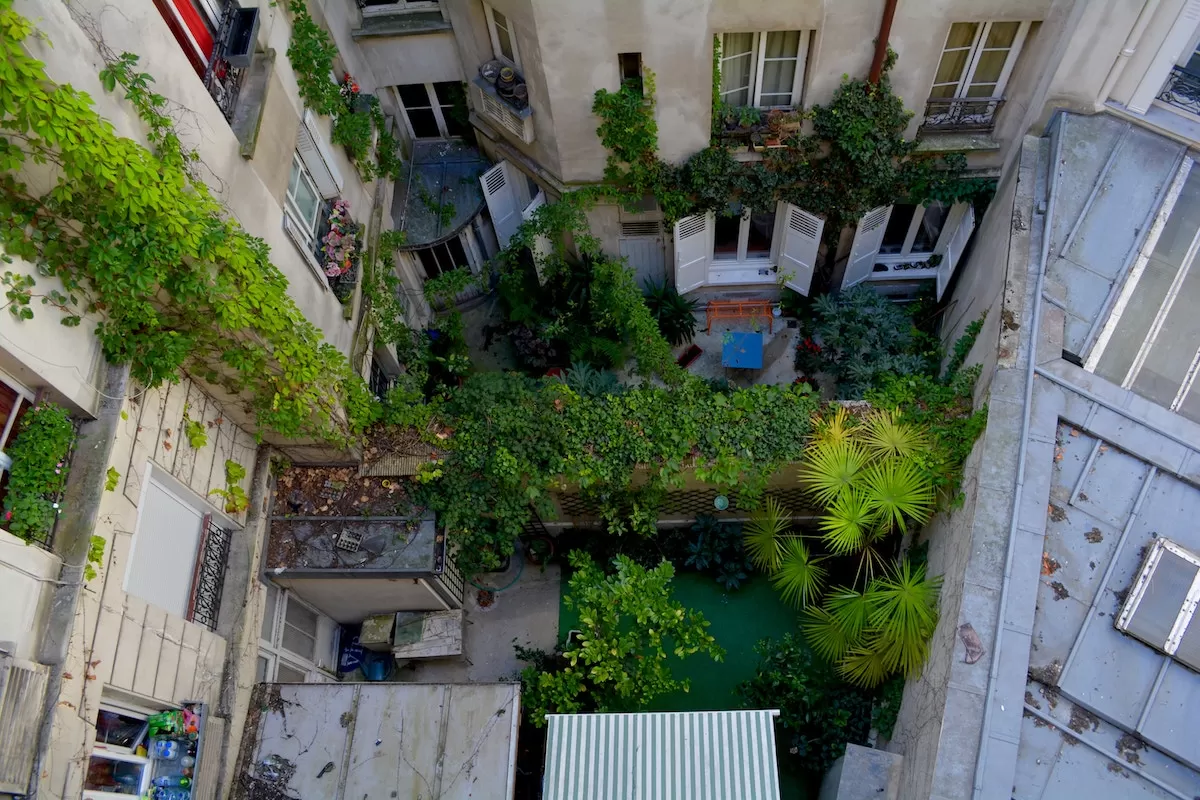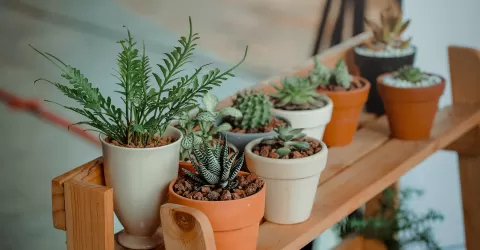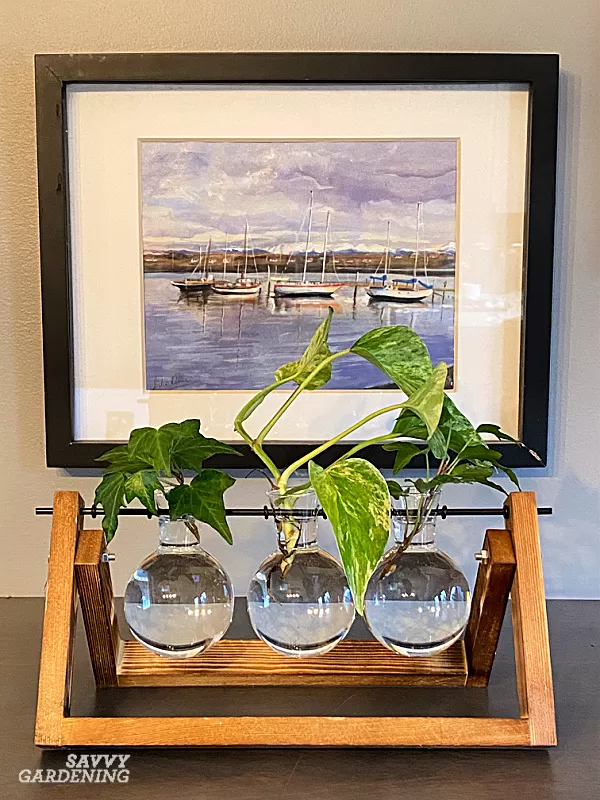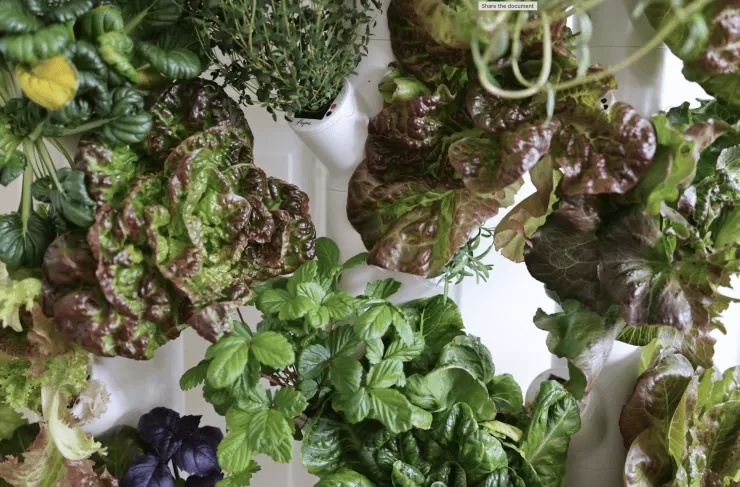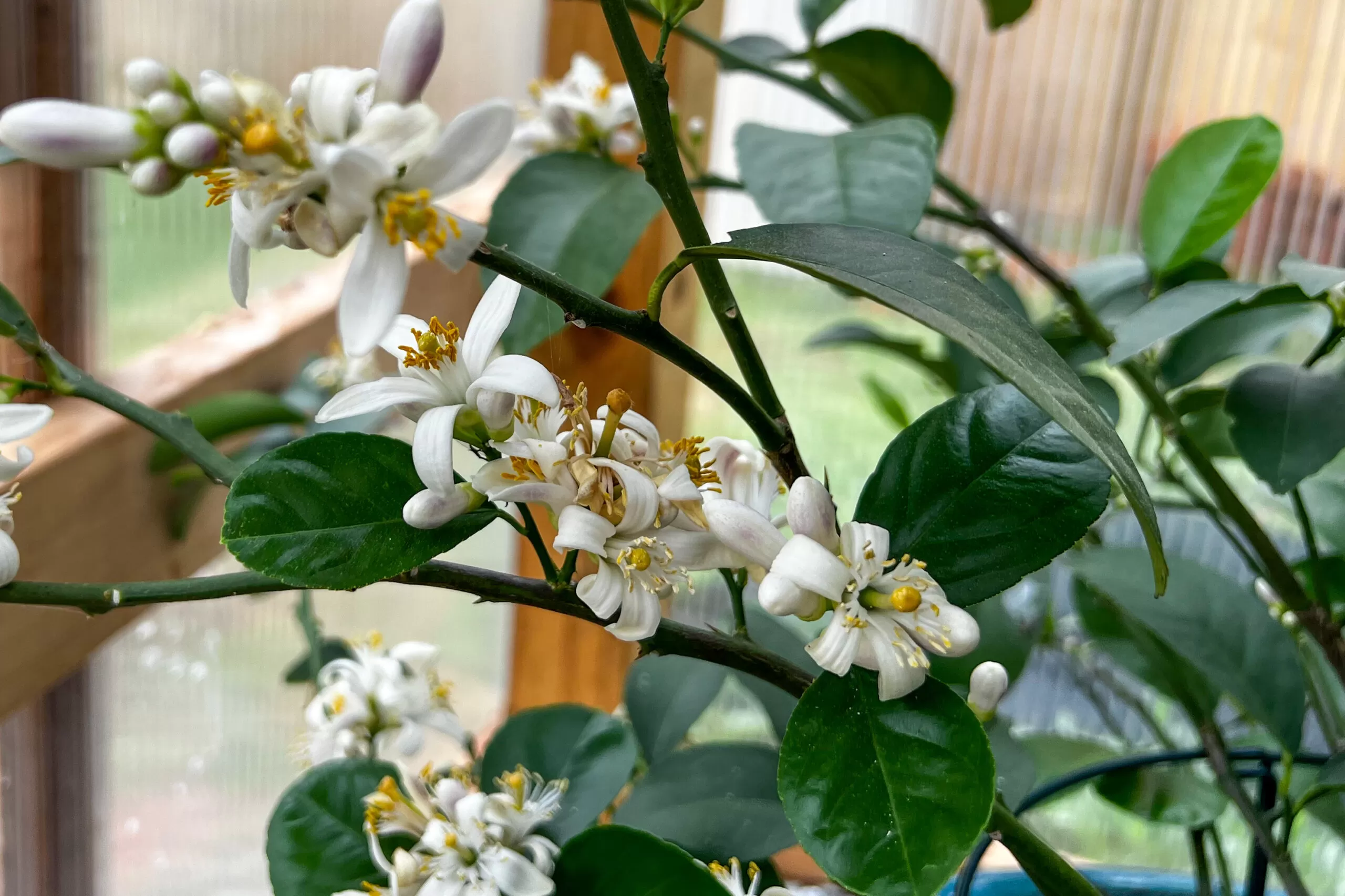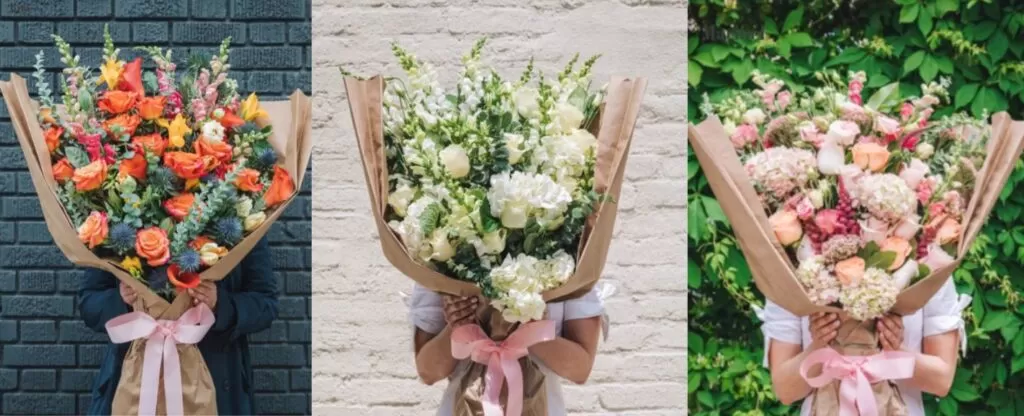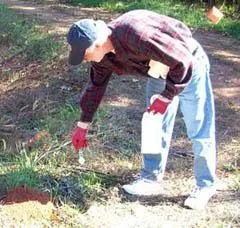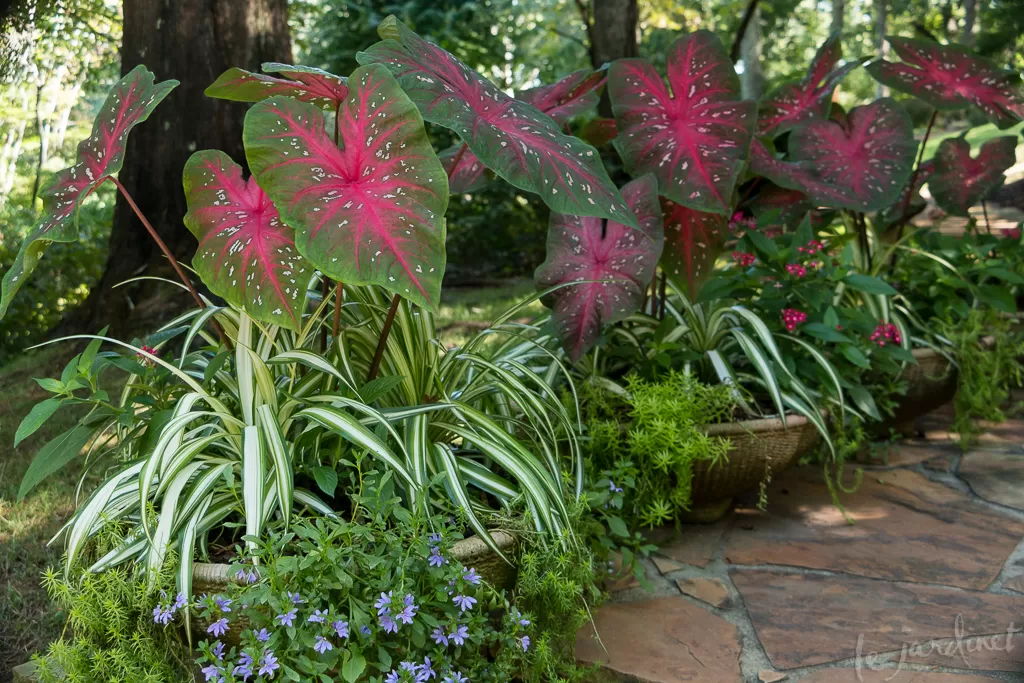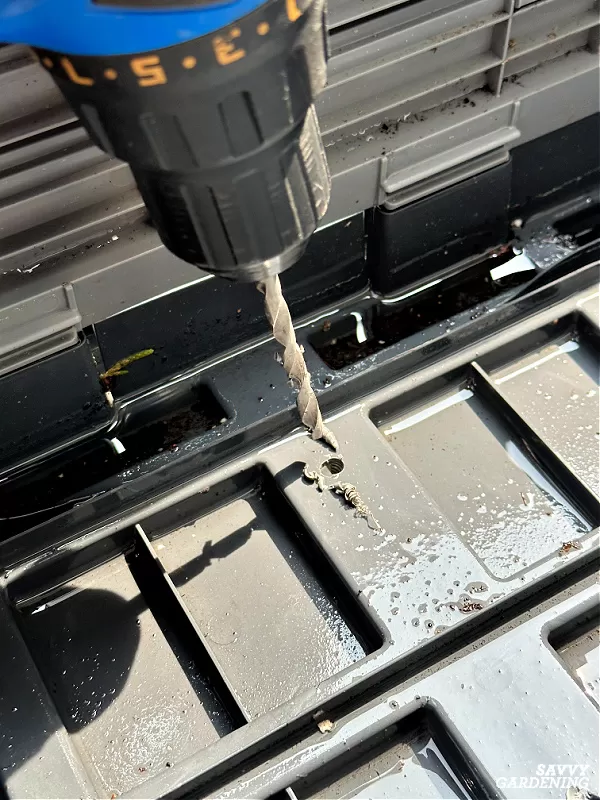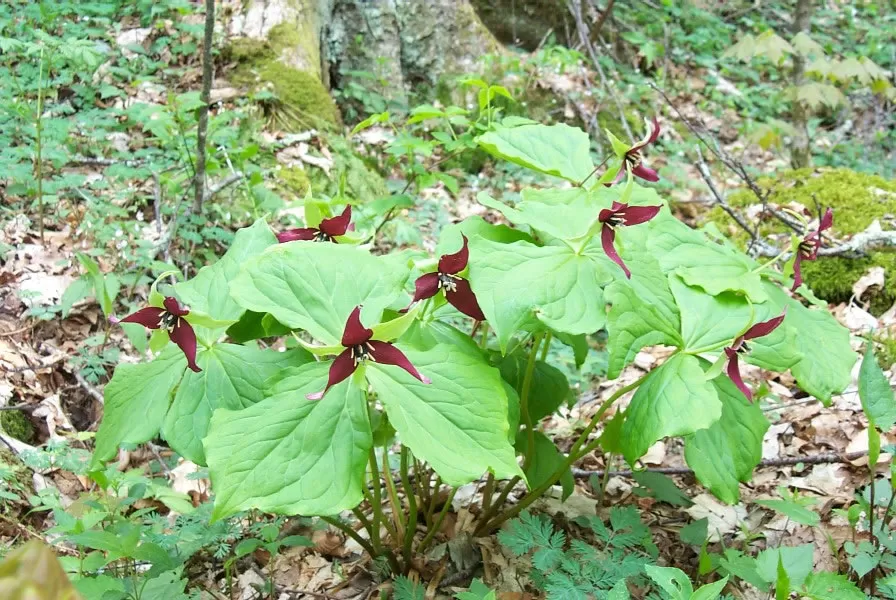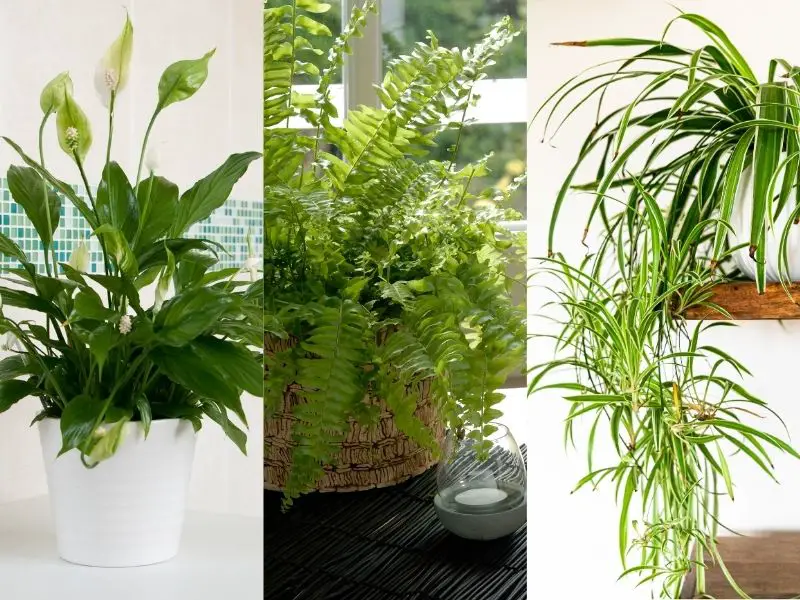- Discover the core principles of minimalist garden design for tranquil spaces.
- Learn how strategic plant selection and thoughtful hardscaping create low-maintenance beauty.
- Explore how minimalist principles promote sustainability and water conservation.
- Get practical tips for designing and maintaining your own simple garden oasis.
Are you yearning for a garden that feels calming, effortless, and deeply connected to its surroundings? Welcome to the world of minimalist gardening. Far from being stark or empty, this design philosophy celebrates simplicity, intentionality, and the inherent beauty of limited elements. It’s about creating a space that brings peace without demanding constant attention. For many home gardeners, especially those in regions with challenging climates like the desert Southwest, embracing minimalist principles can transform cluttered yards into elegant, functional outdoor retreats. Imagine stepping into your garden and feeling a sense of calm wash over you – that’s the power of a well-executed minimalist design.
Contents
- Why Minimalist Gardening? The Beauty of Less is More
- The Rewards of Simple Design
- Essential Elements of a Minimalist Garden
- 1. Purposeful Plant Selection
- Smart Plant Choices for Simplicity:
- 2. Thoughtful Hardscaping
- Hardscaping Ideas for Clean Design:
- 3. Harmonious Color Palette
- Using Color Mindfully:
- 4. Embracing Functionality
- Functional Elements to Consider:
- Designing Your Minimalist Oasis: Step-by-Step
- Step 1: Laying the Groundwork with a Plan
- Key Planning Questions:
- Step 2: Simplifying Plant Groupings
- Effective Grouping Strategies:
- Step 3: Integrating Simple Water Elements
- Water Feature Tips:
- Step 4: Strategic Lighting
- Lighting Ideas:
- Maintaining Your Minimalist Haven
- Essential Routine Tasks:
- Seasonal Care Notes:
- Finding Inspiration and Plant Spotlights
- Conclusion: Cultivate Calm with Minimalist Gardening
Why Minimalist Gardening? The Beauty of Less is More
Choosing a minimalist approach for your garden offers numerous advantages, making it a compelling style for busy homeowners and sustainability-conscious gardeners alike. It’s a philosophy that resonates deeply with the desire for simplicity in a chaotic world.
The Rewards of Simple Design
Minimalist gardening isn’t just an aesthetic choice; it’s a lifestyle shift for your outdoor space. It naturally lends itself to environments that thrive on restraint, allowing the inherent textures, forms, and open spaces of the landscape to shine.
- Water Conservation: A cornerstone of minimalist design often involves selecting drought-tolerant and native plants, drastically reducing water needs compared to traditional gardens. Efficient irrigation systems are also key.
- Low Maintenance: With fewer plant species and repetitive plantings, the time spent on weeding, pruning, and general upkeep is significantly reduced. More time enjoying, less time toiling!
- Aesthetic Appeal: The focus on clean lines, form, and texture allows each element to stand out. Simplicity highlights the beauty of individual plants, stones, or structural features.
- Sustainability: Utilizing local, native plants and materials minimizes environmental impact. Integrating edible plants adds another layer of sustainability, providing food right outside your door.
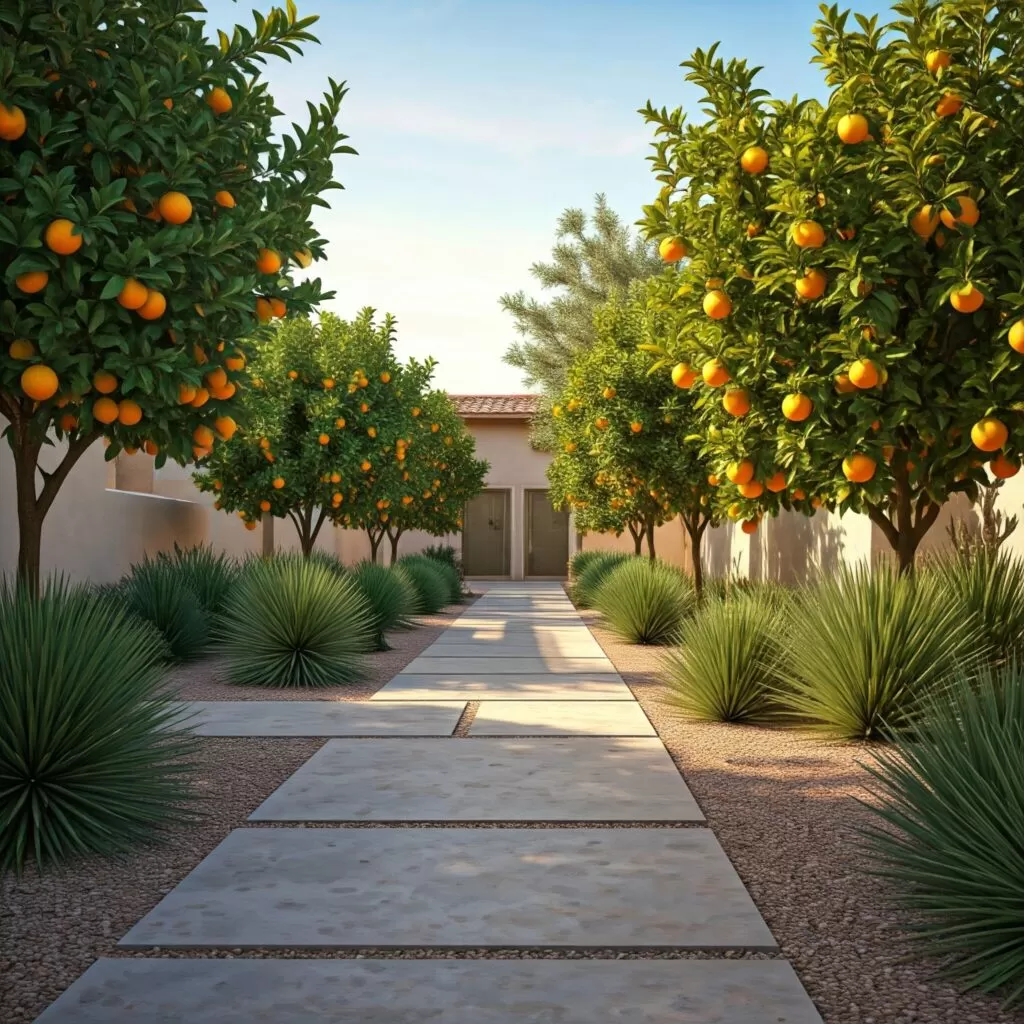 Minimalist garden design featuring fruit trees in a structured layout
Minimalist garden design featuring fruit trees in a structured layout
Essential Elements of a Minimalist Garden
Building a minimalist garden involves a deliberate focus on a few key components, chosen for their form, function, and ability to harmonize with each other.
1. Purposeful Plant Selection
The soul of your garden lies in your plant choices. In a minimalist design, every plant must earn its place. Prioritize species that are well-suited to your local climate and soil, particularly hardy, low-water varieties. Native plants are an excellent choice as they require minimal intervention and support local wildlife. Don’t shy away from incorporating edible plants like fruit trees, herbs, or vegetables – they can be stunning additions when integrated thoughtfully into the design.
Smart Plant Choices for Simplicity:
- Focus on Form & Texture: Look for plants with strong architectural shapes (like succulents or cacti) or interesting textures (like ornamental grasses).
- Consider Year-Round Interest: Select plants that offer appeal across seasons, whether through foliage color, structure, or long blooming periods.
- Limit Your Palette: Instead of dozens of different species, choose a select few that complement each other and repeat them throughout the design for cohesion.
2. Thoughtful Hardscaping
Hardscaping provides the essential structure and bone structure of your minimalist garden. Materials like natural stone, gravel, concrete, or wood define spaces, create pathways, and add architectural interest. The choice of material should be simple, durable, and complement the natural environment.
Hardscaping Ideas for Clean Design:
- Defined Pathways: Simple paths using gravel, pavers, or large stepping stones guide movement and add visual lines.
- Structured Patios/Seating Areas: Create functional zones for relaxation using clean-lined materials.
- Retaining Walls: Use natural stone or concrete blocks to create terraces or raised beds, adding depth and structure.
3. Harmonious Color Palette
Minimalist gardens typically lean towards a subdued color palette inspired by nature – think earth tones, soft greens, and natural textures. This doesn’t mean a total absence of color, but rather using vibrant hues sparingly to create deliberate focal points.
Using Color Mindfully:
- Base Colors: Build your design around neutral tones from hardscaping and foliage (greys, browns, muted greens).
- Accent Colors: Introduce pops of color through carefully chosen flowering plants or decorative elements placed intentionally.
- Texture as Variety: Allow the varied textures of plants, stones, and mulch to provide visual richness without relying on excessive color.
4. Embracing Functionality
In a minimalist garden, every element should ideally serve a purpose, contributing to both the beauty and usability of the space. This functional approach simplifies maintenance and enhances the overall experience.
Functional Elements to Consider:
- Raised Beds: Perfect for growing herbs, vegetables, or simply containing plantings with clean lines.
- Seating Areas: Simple, comfortable furniture invites you to pause and enjoy the space.
- Shade Structures: Pergolas or simple trellises offer relief from the sun and add vertical interest.
Consider how incorporating edible plants fits into this functional framework. Many gardeners find the act of growing food both calming and incredibly rewarding, aligning perfectly with the intentionality of minimalist design while simultaneously practicing agriscaping to create stunning and sustainable outdoor spaces.
Designing Your Minimalist Oasis: Step-by-Step
Creating a minimalist garden requires planning and intentionality. It’s about making deliberate choices from the outset to ensure simplicity and cohesion.
Step 1: Laying the Groundwork with a Plan
Before you dig, sketch out your vision. Consider the size and shape of your garden, sun exposure, and how you want to use the space.
Key Planning Questions:
- How does sunlight move across the area throughout the day?
- Where are the natural focal points or challenging spots?
- What functional areas do you need (seating, dining, play)?
- How will people move through the garden?
Step 2: Simplifying Plant Groupings
Avoid the urge to plant one of everything. Grouping similar plants together creates visual impact, simplifies irrigation, and reinforces the minimalist aesthetic.
Effective Grouping Strategies:
- Monoculture Blocks: Planting swathes of a single species creates a strong visual statement and is easy to maintain.
- Textural Clusters: Combine plants with contrasting textures (spiky succulents next to smooth stones, feathery grasses behind solid shrubs).
- Layering: Use ground covers, mid-sized plants, and taller elements to create depth within simple groupings.
 A simple dry rill serving as a minimalist water feature or drainage channel in a desert garden.
A simple dry rill serving as a minimalist water feature or drainage channel in a desert garden.
Step 3: Integrating Simple Water Elements
A minimalist garden doesn’t exclude water features. Simple designs like a quiet reflecting pool, a single-spout fountain, or even a dry creek bed or rill (like the one pictured above, which can manage water flow during rain) can add serenity and sound without complexity.
Water Feature Tips:
- Choose Simplicity: Opt for clean lines and natural materials like stone or concrete.
- Scale Appropriately: Ensure the size of the feature fits the overall garden design.
- Consider Placement: A feature near a seating area enhances relaxation.
Step 4: Strategic Lighting
Thoughtful lighting extends the enjoyment of your minimalist garden into the evening and highlights its best features. Keep lighting simple and functional.
Lighting Ideas:
- Pathway Lighting: Low-voltage lights enhance safety and guide the eye along clean lines.
- Up-lighting: Use lights to accentuate the form of architectural plants or hardscaping elements.
- Ambient Light: Simple string lights over a patio create a cozy atmosphere.
 Well-maintained minimalist garden showcasing healthy fruit trees.
Well-maintained minimalist garden showcasing healthy fruit trees.
Maintaining Your Minimalist Haven
One of the biggest draws of minimalist gardening is the promise of lower maintenance. While it’s not a no-maintenance garden, the tasks are generally simpler and less frequent.
Essential Routine Tasks:
- Watering: Primarily focused on checking efficient drip systems and adjusting based on weather. Interactive watering guides can be invaluable.
- Pruning: Selective pruning to maintain plant shape and remove dead material.
- Weeding: Prompt removal of weeds is crucial to preserve clean lines and the intended aesthetic.
- Cleaning: Keeping hardscaped areas free of debris maintains the neat, intentional look.
Seasonal Care Notes:
- Spring: Time for new plantings and refreshing mulch.
- Summer: Focus on monitoring water needs during peak heat.
- Fall: General cleanup, preparing for cooler temperatures.
- Winter: Providing frost protection for sensitive species if needed in your zone.
Finding Inspiration and Plant Spotlights
Look to successful minimalist gardens, botanical collections, or even art installations for inspiration. Pay attention to how simple forms, textures, and spaces are used effectively.
Here are a few examples of plants often used in minimalist designs, particularly in arid or low-water contexts:
- Saguaro Cactus
- Scientific Name: Carnegiea gigantea
- Common Name: Saguaro
- Zone: 9-11
- Light: Full Sun
- Humidity: Low
- Water: Very Low (established plants need little to no supplemental water)
- Aloe Vera
- Scientific Name: Aloe barbadensis miller
- Common Name: Aloe Vera
- Zone: 8-11
- Light: Full Sun to Partial Shade
- Humidity: Low to Moderate
- Water: Low (allow soil to dry out completely between waterings)
- Texas Sage
- Scientific Name: Leucophyllum frutescens
- Common Name: Texas Sage, Cenizo
- Zone: 8-11
- Light: Full Sun
- Humidity: Low
- Water: Very Low (drought tolerant once established)
SIGN UP NOW for the Agriscaping Mastery Program!
Conclusion: Cultivate Calm with Minimalist Gardening
Embracing minimalist gardening is an invitation to create a garden that is not only beautiful and easy to care for but also deeply calming. By focusing on clean design, sustainable practices, and intentional choices, you can transform your outdoor space into a serene retreat that reflects simplicity and elegance. Whether you’re working with a small urban patio or a larger landscape, the principles of minimalism offer a powerful framework for creating a garden that nurtures both the environment and your soul. Start small, plan thoughtfully, and discover the profound peace that a minimalist garden can bring to your home.
Ready to dive deeper into creating sustainable and beautiful landscapes? Explore more content on Thelittle.garden and share your own minimalist garden journey in the comments below!

